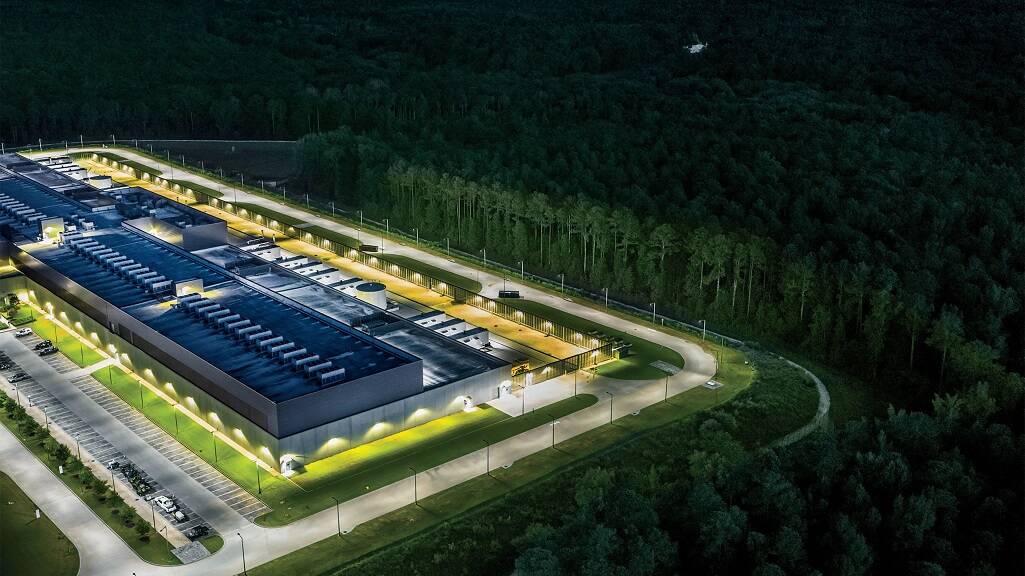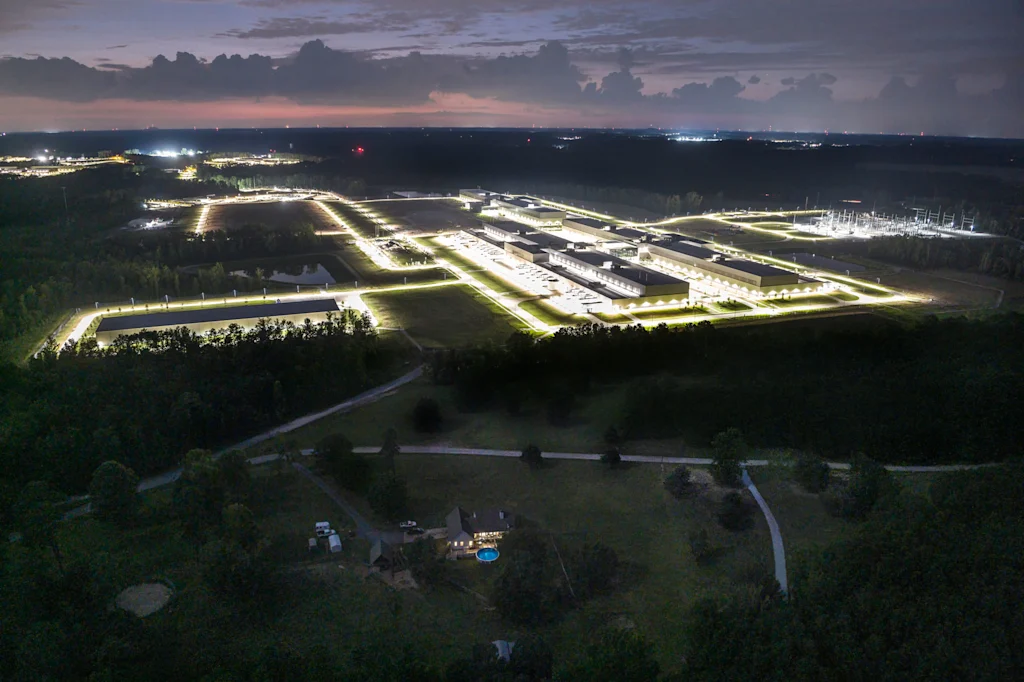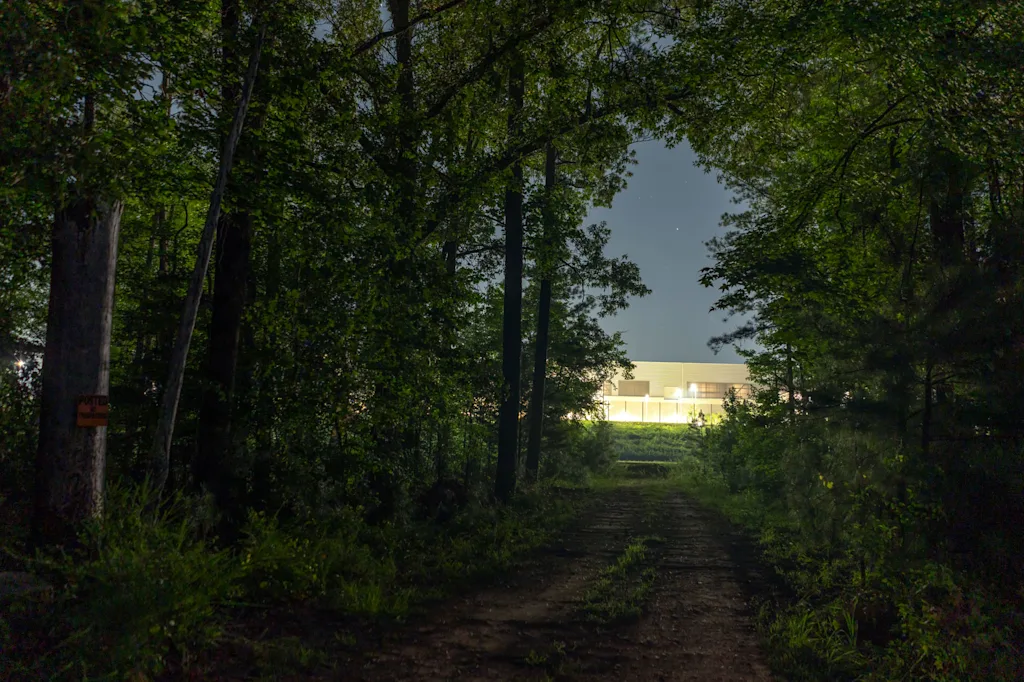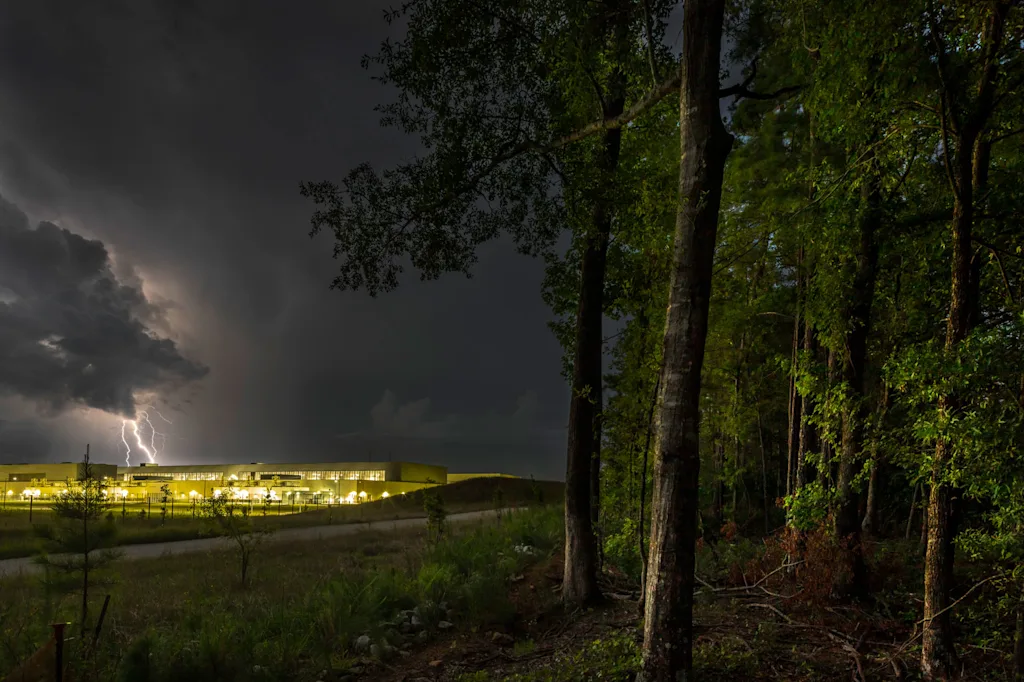- | 8:00 am
Photos: What it’s like living next to Meta’s largest data center
As the AI industrial revolution accelerates, data centers are popping up across the country—with outsize impacts on the communities next door.

Data centers have become the starting blocks in the global race for AI supremacy. Tech giants like Meta, Alphabet, and OpenAI have committed hundreds of billions of dollars collectively to building more of them. States are offering incentives for their development, and President Donald Trump signed an executive order in July cutting regulations to speed up construction.
For all the breakthroughs they promise, the environmental toll of these facilities is already staggering: According to the International Energy Agency, U.S. data centers used roughly 185 terawatt-hours of electricity in 2024—more than all of Pakistan’s 248 million people used that year. To keep hot servers cool, a typical 100-megawatt hyper-scale data center consumes as much water per day as 6,500 homes. And, as with the factories and railroads that powered previous technological revolutions, the impact on surrounding communities can be especially profound.
What does “the cloud” look like? For Beverly Morris, it’s hulking, windowless buildings, bright lights, and literal clouds of dust.

In 2020, two years after Beverly and husband Jeff Morris bought their home in Mansfield, Georgia, construction crews began clearing the way for what would turn out to be one of Meta’s largest data centers, a sprawling, 2.5 million-square-foot complex—larger than the state’s largest shopping mall—just 1,000 feet from their front door.
With no official notice to Morris from Meta or surrounding Newton County representatives, the oak forest across her dirt road was felled; eventually, a white glow from a row of perimeter spotlights flooded their home nightly. “Nature was run out of there completely,” Morris says.
By 2022, during busy construction days, thick plumes of red dust would storm across their property. After a particularly bad onslaught, Morris called the phone number she found on a construction sign; a crew soon showed up with power washers to hose down her house.
“There was a red river running off of my roof,” she says. It was such a spectacle that one of the workers insisted on capturing it on his phone. She now wishes she’d obtained the video. “Everything was covered in red.”

The new factories
“The cloud” has never been a very helpful description of the global infrastructure of the internet, but as the global race for AI supremacy ramps up, a new, more apt metaphor has emerged.
“I think everybody should stop saying data centers,” interior secretary Doug Burgum told a conference in D.C., where in July, Trump signed an executive order cutting regulations to speed up data center construction. Burgum cited the term used by the CEO of Nvidia: ”It’s not data centers. It’s AI factories.”
But these giant warehouses aren’t factories in the traditional sense. Even the most compute-intensive data centers employ few full-time workers. Most of the work in a data center is done by automated systems and software that manage the infrastructure, while the core computation of training and inference is powered by energy-hungry chips, often made by Nvidia.
In the first half of 2025, spending on data centers—including big investments from Meta, Alphabet, OpenAI, Amazon, and xAI— contributed as much to U.S. GDP growth as household consumer spending—an unprecedented economic shift.
But tremendous cash isn’t the only cost, and tech companies aren’t the only ones shouldering the burden.
In Mansfield, Morris says the impact of all the digging and blasting to build Meta’s data center, known as Stanton Springs, eventually extended to her well water. By 2023, the pipes in her house were clogged with sediment, wrecking appliances and slowing faucets to a drip. “I haven’t drank my water in years,” says Morris, who estimates she’s spent about $5,000 on repairs so far. She said a July appraisal found that her property’s value had cratered.

The extent to which the construction of the data center contributed remains unclear. A Meta spokeswoman told The New York Times that “the company had recently commissioned a well study on the Morrises’ property and said it was ‘unlikely’ that its data center affected the supply of groundwater in the area.”
Though the study—a copy of which was reviewed by Fast Company—assessed the impact of the facility’s construction and operations on local groundwater and nearby wells, Morris says “Neither Meta nor anyone else came on my property to do a groundwater study.” Meta declined repeated requests for comment on this story.
“It has changed the way that I live here,” she says. “And they really accept no responsibility for it. And they’re big enough to do that.”
How AI’s power needs affect everyone
Tax breaks and relatively cheap power have turned the Atlanta area into the country’s fastest-growing hyper-scale data center market. Demand is so high that the Peach State has delayed closing several coal-fired power plants.
Only a few years ago, Big Tech touted bold carbon targets. Now Bob Sherrier, a staff attorney in the Southern Environmental Law Center’s Georgia office, says the data center blitz “will deepen our reliance on dirty, volatilely priced methane gas and coal for decades.” (Stanton Springs consumed 968,000 megawatt-hours of electricity in 2023, according to Meta‘s most recent numbers, enough to power about 90,000 average homes.)
Nationally, Morgan Stanley estimates that forecasted data center demand will require an additional 45 gigawatts, or about 10% of all current U.S. generation capacity—equivalent to 23 Hoover Dams. The data center build-out also means that all the “cheap power” that’s drawn developers to states like Georgia isn’t actually that cheap: Nationally, the cost of building out new transmission lines and substations to power the AI push is contributing to surging electricity rates for customers across the country. “In Georgia, our rates have gone up six times,” Morris says.

Power is only part of the equation: Keeping chips cool means withdrawing and consuming immense amounts of water, and developers prioritize places that are hot and dry, where power tends to be cheaper, meaning most data centers are being built in areas with high water stress.
According to the local water authority, the Stanton Springs facility guzzles about 10% of Newton County’s daily water supply. In Newton County, demand is rising so fast that residents could face a water deficit by 2030, according to a 2024 report.
Growing AI’s footprint—and impact
Some of the world’s biggest projects are emerging in neighboring Louisiana. In Memphis, a supercomputer for Elon Musk’s xAI has been relying on dozens of unpermitted temporary gas turbines, exacerbating health issues in the surrounding community. In Richland Parish, a plan to build 2 gigawatts’ worth of gas turbines for a Meta data center project was recently approved by planning authorities, despite local objections that the process was rushed and lacked transparency. But the scale of the project is no secret: “Just one of these covers a significant part of the footprint of Manhattan,” CEO Mark Zuckerberg wrote on Facebook.
Not to be outdone, OpenAI and Oracle are building an 800-acre data center in Texas that will form part of the Stargate project, a partnership with the Trump administration to create a nationwide backbone for training ever-larger AI models. Backed by a $100 billion investment from Nvidia (much of it to be spent on its own chips), the five-data-center project could demand upwards of 10 gigawatts—about as much energy as consumed by all of New York City.
Morris, who grew up in Georgia, misses the fireflies that used to surround her house, which glowed until the data center showed up.
Even with the spotlights switched off, the facility, now operational, still creates a dome of light visible from miles away. (The area’s Bortle score, a measure of light pollution, shows a 25% increase in artificial brightness since 2020.)
The sounds of construction have been replaced by a constant electric hum, periodic alarms, and the intermittent buzz of diesel generators.
Morris admits to feeling powerless, but has found some comfort online—even on Facebook—connecting with others across the state who are pushing back against new data center development. “I know I’m not the only one now,” she says.
And she’s right. Last month, the city council for the nearby city of Social Circle unanimously enacted a 90-day moratorium on new data centers.






































